Best Native Plants for Your North Texas Yard
BY STUART KUSHNER | MAY 2ND, 2023 | LAWN CARE, TEXASIf you’re a nature lover, North Texas delivers. It’s a scenic wonderland with a massive array of plants and flowers bursting from the countryside.
So why do some homeowners insist on stocking their landscape with plants that are pretty, yes, but that require incredible effort to keep alive and looking good? The alternative is pretty simple: Use easy-to-grow native plants for your North Texas yard.
There are great reasons for using native plants:
- They don’t need as much water, fertilizer, and pesticides as non-native plants.
- Natives are adapted to North Texas’ climate, so they thrive naturally.
- They attract beneficial wildlife and pollinators to your garden.
- Natives preserve biodiversity.
And, by the way, they look incredible. Let’s take a look at some of the best of the natives.
In this article:
- North Texas Vs. the Rest of Texas
- Prairie verbena
- Scarlet Sage
- Texas Sage
- Blackfoot Daisy
- Mexican Plum
- Pavonia
- Turk’s Cap Red
- FAQ About Native Plants in North Texas
North Texas vs. the Rest of Texas
Texas is the second largest state in the United States. It’s so big, in fact, that different regions of the state have different climates. For example, North Texas is cooler and drier than South Texas but receives more rainfall than desert-like West Texas.
Because the climate varies so much, each region has a different hardiness zone, indicating what plants thrive in which area. North Texas is in USDA hardiness zone 8, meaning the lowest temperatures are between 10 and 20 degrees Fahrenheit.
It’s important to know these distinctions when choosing plants. Texas is not a one-size-fits-all state. Here are some of the best options for North Texas.
Prairie Verbena (Glandularia bipinnatifida var. Bipinnatifida)
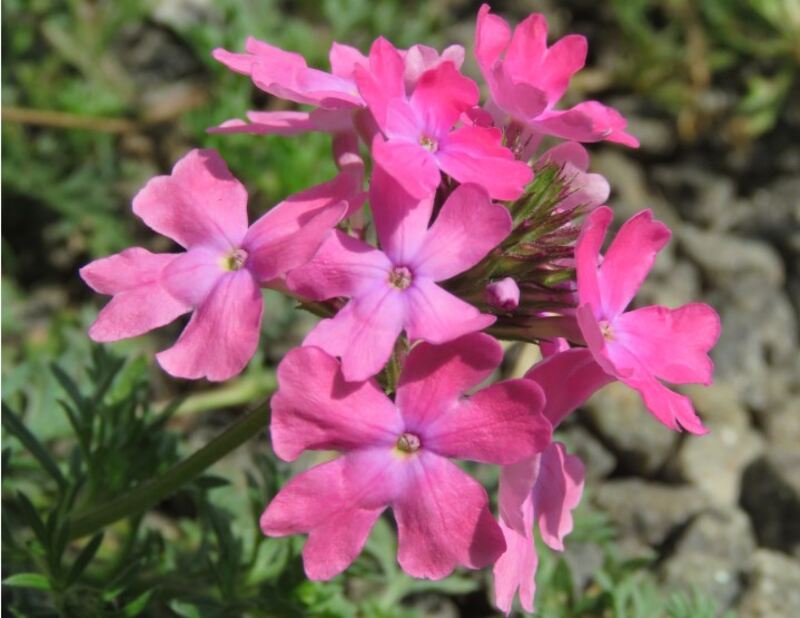
Photo Credit: Vinayaraj / Wikimedia Commons / CC BY-SA 3.0
Abundant along Texas roadways, prairie verbena has a long flowering season from March to October. It sprouts purple flowers, each with five petals, and it regularly reseeds. These flowers are adored by butterflies and bees.
Prairie verbena likes partial shade to full sun and tolerates moderate drought conditions. It prefers dry to moist, well-drained soils.
Plant type: Flowering plant/wildflower
Sun: Full sun, partial shade
Soil: Clay, loam, or sand, well-drained
Duration: Perennial
Water needs: Low
Mature height: 6-12 inches tall and 1-2 feet wide
Scarlet Sage (Salvia coccinea)
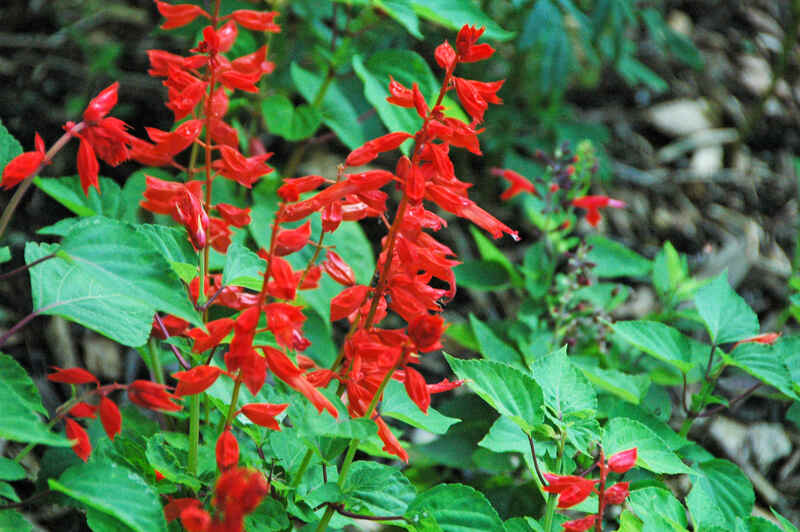
Photo Credit: James St. John / Wikimedia Commons / CC BY-SA 3.0
If you like red flowers, you’ll love scarlet sage, which explodes with bright blooms from February through October. It attracts butterflies and hummingbirds, and is deer-resistant. However, it needs regular watering and loose, well-drained, rocky soil to thrive.
Scarlet sage thrives in full sun, is easy to grow, and is pest- and disease-tolerant. Pair it with other annuals and perennial plants for the best results.
Plant type: Flowering plant
Sun: Full sun, partial shade, shade
Soil: Sandy, loam, clay loam, rocky, caliche type
Duration: Annual, but usually reseeds easily
Water needs: Moderate
Mature height: 1-3 feet tall, 1 foot wide
Texas Sage (Leucophyllum frutescens)
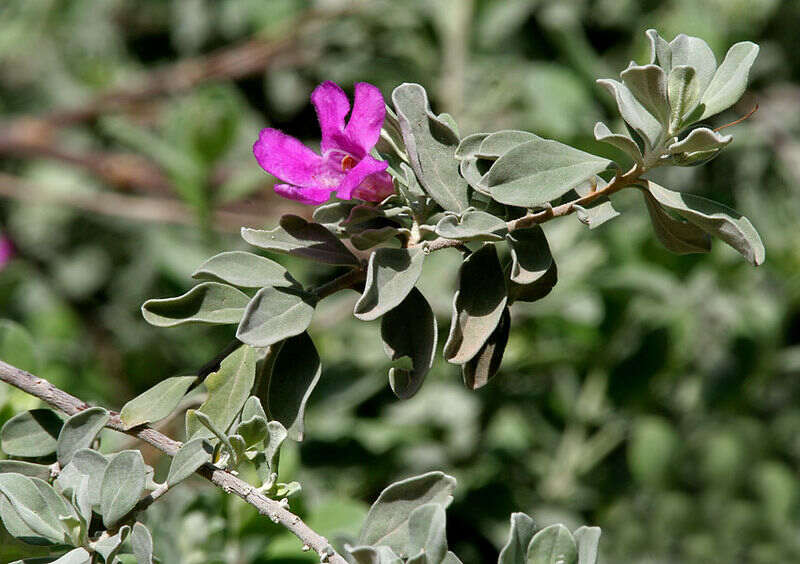
Photo Credit: J.M. Garg / Wikimedia Commons / CC BY 3.0
Texas sage has many names, ranging from the barometer bush to the Texas silverleaf. It can withstand heat and drought and requires almost no maintenance once established. Purple flowers sprout in the summer and fall, although some have white or pink flowers.
Texas sage requires full sun to bloom and likes alkaline, well-drained soil. If your yard has both those conditions, this is the sage for you.
Plant type: Shrub
Sun: Full sun
Soil: Well-drained alkaline soil or acidic soil with added dolomitic limestone
Duration: Perennial
Water needs: Low
Mature height: 8 feet
Blackfoot Daisy (Melampodium leucanthum)
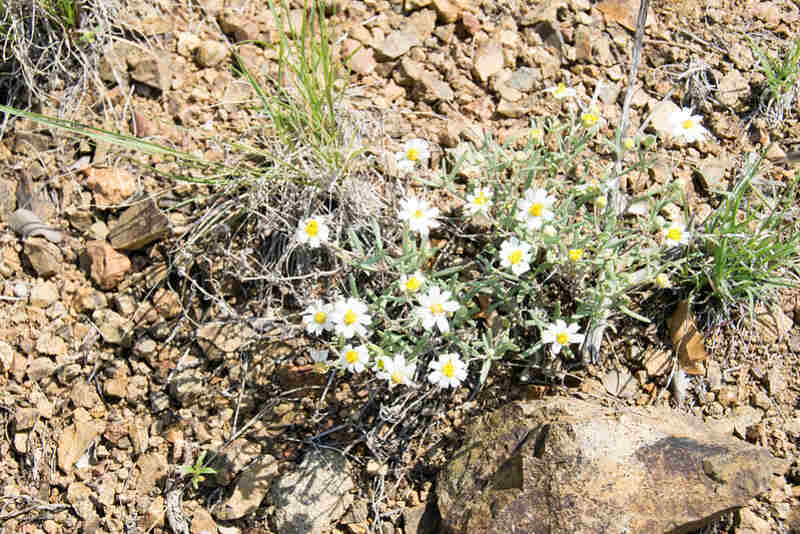
Photo Credit: Paul Asman and Jill Lenoble / Flickr / CC BY 2.0
Also known as the plains blackfoot, the blackfoot daisy is native to desert slopes, mesas, and high plains. It blooms from early spring through fall, growing brilliant white flowers. It’s a perfect plant for edging beds or rocky outcroppings.
Blackfoot daisy loves full sun but can handle light shade, and is deer-resistant. It does, however, need well-drained soil to thrive.
Plant type: Perennial
Sun: Sun, part shade
Soil: Dry, rocky, calcareous
Duration: Perennial
Water needs: Low
Mature height: 6 inches to 1 foot tall and wide
Mexican Plum (prunus mexicana)
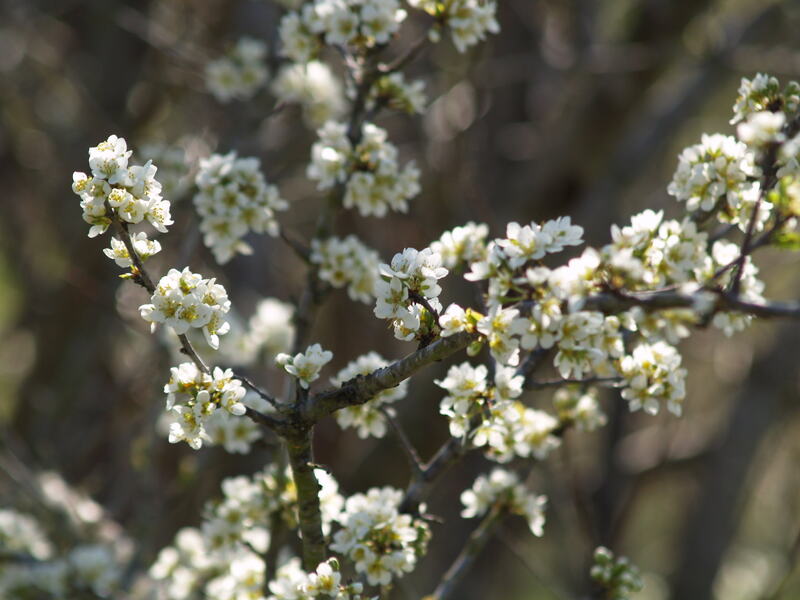
Photo Credit: Charles Willgren / Flickr / CC BY 2.0
As you would expect from its name, the Mexican plum tree sprouts purple plums in the fall and beautiful white flowers in the spring. At maturity, it grows to 20 to 25 feet tall with spreading branches, making it a good choice for smaller gardens.
The Mexican plum tolerates drough, but it does like some irrigation to help it retain its fruits in the fall. It also handles shade well.
Plant type: Tree
Sun: Full sun to partial shade
Soil: Adapts to sandy, loam, clay, or limestone. Prefers well-drained soil
Duration: Perennial
Water needs: Medium
Mature height: 25 feet
Pavonia (Pavonia lasiopetala)
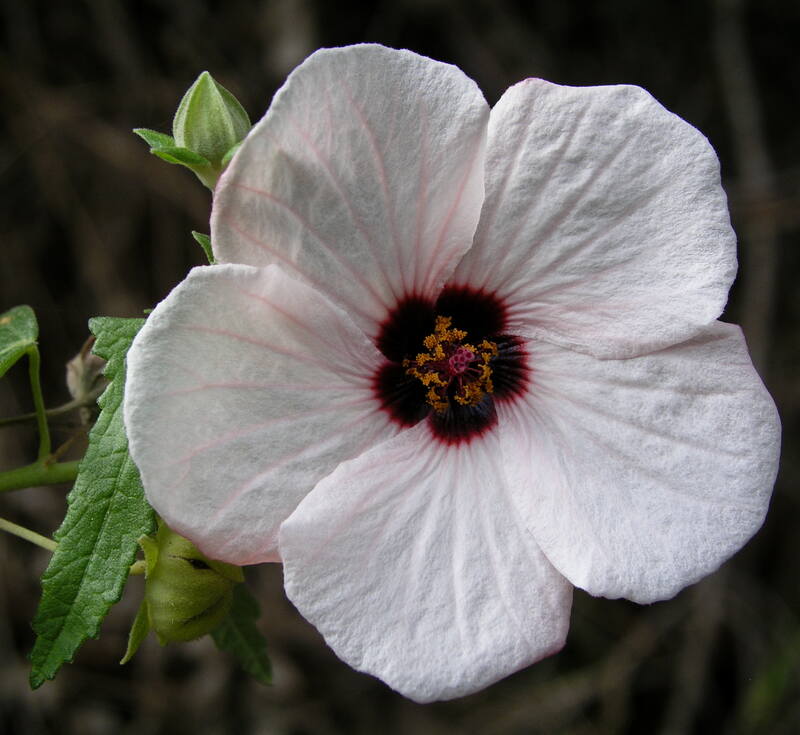
Photo Credit: David Midgley / Wikimedia Commons / CC BY-SA 3.0
A very popular plant in Texas, the pavonia, or rock rose, resides naturally on dry, rocky woods or banks of Texas. Its long bloom period and versatility make it a favorite among homeowners; it accepts full sun to half-day shade, various soils, and dry conditions.
The pavonia bears pink hibiscus-like flowers between spring and fall, which open in the morning and close in the afternoon, when the temperature is highest.
Plant type: Shrub
Sun: Full sun, partial shade
Soil: Rocky, sandy, clay, loam
Duration: Perennial
Water needs: Low
Mature height: 1.5-4 feet tall and 3 feet wide
Turk’s Cap Red (Malvaviscus arboreus var. drummondii)
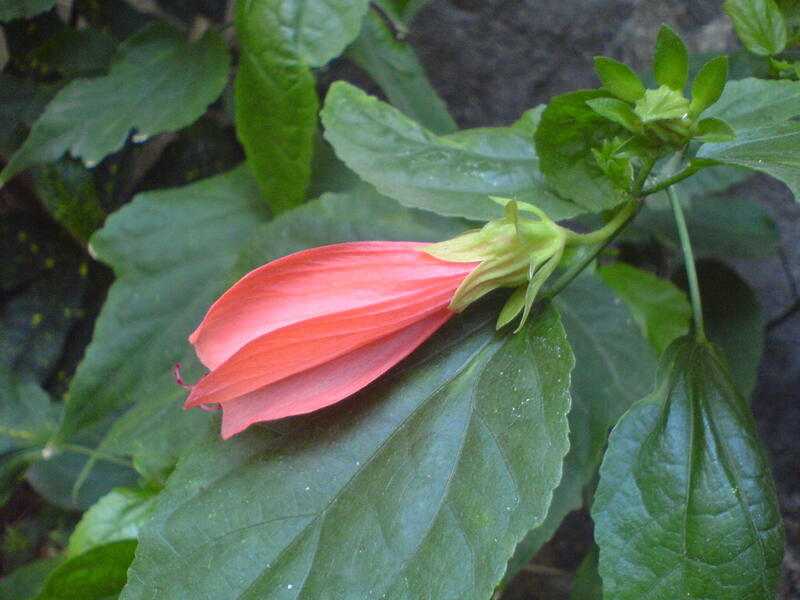
Photo Credit: Dinesh Valke / Wikimedia Commons / CC BY-SA 3.0
If you have a shady yard, the Turk’s cap red is worth planting. It sprouts bright-red, hibiscus-like flowers that resemble a Turkish turban (hence the name). Turk’s cap red attracts hummingbirds and butterflies, and is drought-tolerant once established.
Turk’s Cap Red is native to South Texas, where it’s used as a perennial. In North Texas, however, it’s used as an annual. Don’t worry, it does just fine here.
Plant type: Annual
Sun: Full sun, partial sun, shade
Soil: Sandy, loamy, clay, limestone
Duration: Perennial
Water needs: Medium
Mature height: 2-3 feet tall (up to 9 feet), 3-5 feet wide
Coral Honeysuckle (Lonicera sempervirens)
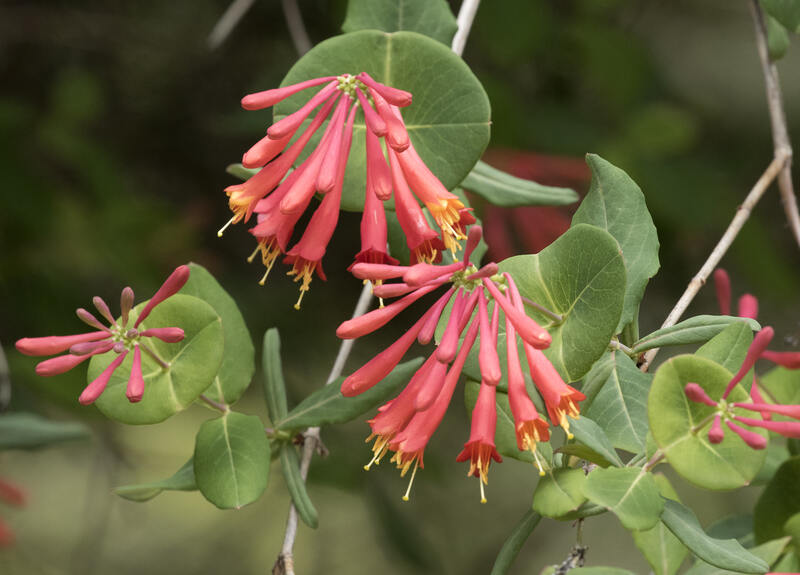
Photo Credit: Zeynel Cebeci / Wikimedia Commons / CC BY-SA 4.0
Attention hummingbird, butterfly, and moth lovers: the coral honeysuckle is the right plant for you! This plant sprouts bright red trumpet flowers with shiny oval leaves from March to June. Red berries follow in the fall.
Coral honeysuckle thrives in full sun to partial shade in rich, well-drained soil. Though the deer will eat the flowers, the plant as a whole is fairly deer-resistant.
Plant type: Vine
Hardiness zones: 4-9
Sun: Full sun to partial shade
Water needs: Medium
Soil: Clay, sand, loam, slightly acidic, well-drained. It acclimates to many soil types.
Duration: Semi-evergreen perennial
Mature height: 15-20 feet
FAQ About Native Plants in North Texas
Native plants grow in an area without human introduction, while non-native plants were introduced to the area where they now grow. Non-native plants may adapt to an area over time, but they generally aren’t as hardy as natives.
Invasive plants are non-native plants that tend to spread out of control. As their name implies, they ‘invade’ native plants’ space and take their moisture, sunlight, and nutrients, leading to poorer water quality, degraded wildlife habitats, and lower plant diversity.
The Bureau of Land Management states that native plants face numerous threats. These include habitat loss, overgrazing, wildfires, pollution, climate change, and invasive species.
The Final Word
Once you buy your plants, your lawn is next. Get one of North Texas’ best grass types to ensure you have the healthiest lawn possible. Then hire one of Wikilawn’s local pros to do the dirty work for you.
Main Image Credit: Coral Honeysuckle / Paul VanDerWerf / Flickr / CC BY 2.0